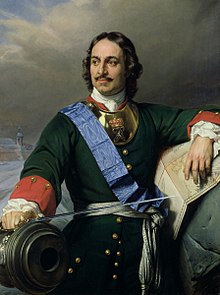User:LittleRoughRhinestone/russianhistoryassignment

Government reform under Peter I refers to modifications made to the state apparatus of Russia during the rule of Peter I.
Peter ascended to the throne in 1682; he ruled jointly with his half-brother Ivan V until his death in 1696. After this, Peter implemented a series of sweeping reforms aimed at modernizing Russia, modeled on Enlightenment ideals and influenced by advisers from Western Europe. At first, these reforms were intended to fund the Great Northern War; later reforms were more systematic and would significantly change the internal construction and administration of the state.
Background
The majority of Peter's reign was dominated by the Great Northern War (1700-1721), during which Russia, along with a host of allies, seized control of the Baltic Sea from Sweden and gained considerable influence in Central and Eastern Europe. The war, one of history's costliest at the time, consumed significant financial and economic resources, and the administrative system Peter had inherited from his predecessors was inefficient at gathering and managing resources for the war.
During his Grand Embassy (Великое посольство), Peter conducted negotiations with a number of European powers to strengthen his position against Sweden and the Ottoman Empire. During this time, he was exposed to the developed nations of Western Europe and became intrigued with the prospect of turning Russia into an industrial economy. Despite Russia's vast size and considerable natural resources, economic performance was hampered by a number of factors, including corruption, inefficient allocation of agricultural resources, and lack of access to warm-water ports. Peter believed that reform would not only strengthen his hold on power, but increase the efficiency of the government, and thus better the lot of his people.
Provincial Reform
Table of Ranks
Industry and Trade
Nobility and Peasantry
The Church
Compared to his predecessors, Peter's rule was marked by a larger degree of religious freedom. Non-Orthodox Christians and Muslims were permitted to practice and proselytize their faith, provided they paid an extra tax and not challenge the supremacy of the Orthodox Church.
